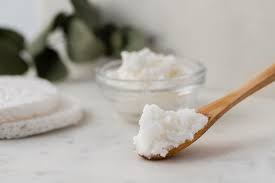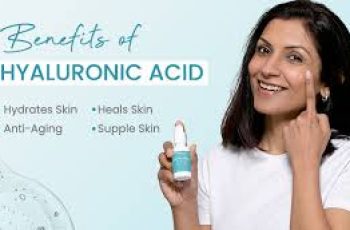
The Truth About Using Baking Soda as a DIY Acne Treatment
You probably have a box of baking soda sitting in your kitchen, and it’s likely being put to good use.
Whether it’s there to make your favorite chocolate chip cookies, or it’s waiting to serve as an all-purpose cleaner, baking soda is a household hero.
But, as versatile as it is, there’s one area where this common ingredient might not be the best choice: your face.
Over the years, baking soda has earned a reputation in the DIY skincare world, especially as a potential acne treatment. However, dermatologists are less enthusiastic about using it on your skin. Experts like Dr. Marnie Nussbaum, MD, FAAD, and Dr. Annie Gonzalez, MD, warn that adding baking soda to your skincare routine might do more harm than good.
We reached out to these dermatologists to get the facts straight about the use of baking soda in fighting acne.
In this article, we’ll explore how to use baking soda safely, the potential benefits and drawbacks of incorporating it into your skincare routine, and expert advice on when it’s best to leave it on the shelf.
Meet the Experts
Dr. Marnie Nussbaum, MD, FAAD, is a board-certified dermatologist based in New York City. She specializes in non-invasive aesthetic rejuvenation and has extensive experience with skin conditions and treatments.
Dr. Annie Gonzalez, MD, is a Miami-based, board-certified dermatologist and the founder of Glösense Dermatology & Aesthetics.
She is known for her expertise in skincare treatments, with a focus on non-surgical rejuvenation.
What is Baking Soda?
Also known as sodium bicarbonate, baking soda is a naturally occurring chemical compound that has a wide range of uses.
It’s most famous for its alkalinizing properties, which means it can neutralize acids.
Dr. Nussbaum explains that baking soda is technically classified as a salt, while Dr. Gonzalez notes that its ability to neutralize acidic substances is why it works both internally and externally.
On the skin, baking soda can have a variety of effects. While it might seem like a quick fix for acne, understanding its properties is crucial before jumping in with a DIY remedy.
Baking Soda: The Basics
Type of Ingredient: Exfoliant
Potential Benefits: Exfoliates the skin, offers anti-inflammatory properties, and may help balance the pH levels for oilier skin types.
Best For: People in a pinch with no access to specialized acne treatments like salicylic acid or benzoyl peroxide. It may work better for oilier skin types, though even then, it’s not a perfect solution.
How Often to Use: No more than once per week. Overuse can lead to skin damage.
Works Well With: It’s best to mix it only with water to create a paste for spot treatments.
Avoid Using With: Other drying ingredients like retinoids or exfoliating acids, as this can irritate the skin.
Why Baking Soda Might Work for Acne
While it’s easy to be skeptical, there are some benefits to using baking soda on acne-prone skin. Here are a few reasons why some people swear by it:
1. Exfoliation
Baking soda’s gritty texture gives it natural exfoliating properties. Dr. Nussbaum explains that exfoliation helps keep pores clear by removing dead skin cells.
This can prevent pores from becoming clogged, which is a primary cause of acne. When used correctly, baking soda may aid in preventing blackheads, whiteheads, and pimples.
2. Anti-Inflammatory Effects
Baking soda has mild anti-inflammatory properties, according to Dr. Gonzalez. This is why it’s often found in over-the-counter creams designed to calm skin irritations like bug bites or rashes.
For acne, it could theoretically reduce redness and swelling, helping to soothe inflamed pimples or cystic acne.
3. Balancing pH Levels
Dr. Gonzalez explains that the skin has a natural pH level between 4.5 and 6.0, which helps protect it from bacteria and environmental pollutants.
If your skin becomes too acidic, it might produce excess oil (sebum), clogging pores and leading to acne.
Baking soda, being alkaline (with a pH of around 9), can help restore balance, which might be beneficial for oily skin types. However, this benefit comes with significant risks, as we’ll discuss shortly.
The Risks of Using Baking Soda on Your Skin
Despite these potential benefits, using baking soda as an acne treatment carries several significant risks. The main problem is its high alkalinity, which can disrupt your skin’s delicate pH balance. While your skin is naturally acidic, baking soda’s alkaline nature can easily throw it off track, leading to irritation, dryness, and potentially worsening acne.
1. Disrupting Your Skin’s pH
Dr. Nussbaum points out that because baking soda is so alkaline, it can strip your skin of its natural oils. This leaves the skin dry, irritated, and more prone to inflammation.
If your skin’s pH is disturbed, it could even result in premature wrinkles over time, making this an especially risky move for those with sensitive skin.
2. Increased Sensitivity and Dryness
Baking soda can dry out the skin, especially when used in excess.
The dryness can trigger a chain reaction, causing the skin to overcompensate by producing even more oil, which can contribute to more breakouts.
Dr. Gonzalez also cautions that the constant use of baking soda could make acne worse in the long run, as it may irritate the skin, exacerbating redness and inflammation.
3. Potential for Over-Exfoliation
The abrasive nature of baking soda means that it can easily be overused, resulting in over-exfoliation.
Over-exfoliating your skin can lead to broken skin barriers, leaving it vulnerable to infections, increased acne flare-ups, and an increased sensitivity to environmental stressors like UV rays.
How to Use Baking Soda Safely
If you still want to try baking soda as part of your acne treatment routine, it’s essential to use it correctly. Here’s a step-by-step guide to minimize the risks and use it safely:
1. Patch Test First
Before applying anything to your face, do a patch test on a small area of your skin (like your jawline or inner wrist). This will help you determine whether your skin is sensitive to baking soda.
If you notice any redness, burning, or irritation, avoid using it on your face.
2. Use Small Amounts
Dr. Nussbaum recommends mixing about two teaspoons of baking soda with enough water to create a paste-like consistency. This should be used as a spot treatment for specific blemishes or acne spots only. Don’t apply it to your entire face.
3. Leave It on for a Short Time
Apply the paste to affected areas and leave it on for no more than 5 to 10 minutes. This short duration helps minimize the risk of irritation while still offering exfoliating benefits.
Don’t overstay your welcome with baking soda!
4. Moisturize and Use SPF
After washing off the paste, it’s critical to apply a good moisturizer to rehydrate the skin. Since baking soda can be drying, this will help restore moisture.
Dr. Nussbaum also recommends using a broad-spectrum sunscreen daily, as your skin may be more sensitive after using baking soda.
5. Limit Frequency
Don’t use baking soda more than once a week. Its exfoliating properties can cause long-term damage if overused, leading to worsened acne or even premature aging.
The Bottom Line: Is Baking Soda Worth It?
In summary, while baking soda has some benefits, like exfoliating properties and anti-inflammatory effects, it may not be the best solution for acne.
The risk of disrupting your skin’s natural pH and causing dryness, irritation, or further breakouts outweighs the potential rewards.
Dermatologists like Dr. Nussbaum and Dr. Gonzalez agree that baking soda should be used sparingly, if at all.
For acne treatment, it’s safer and more effective to rely on ingredients specifically designed for skincare, such as salicylic acid, benzoyl peroxide, or sulfur.
If you’re looking for a gentle exfoliant, there are plenty of other options that are less likely to cause harm, such as alpha hydroxy acids (AHAs) or beta hydroxy acids (BHAs).
If you experience any adverse reactions after using baking soda, it’s best to consult with a dermatologist for professional advice and alternative treatment options.
While baking soda can have many uses, when it comes to acne, sometimes it’s better to leave it on the kitchen shelf.


